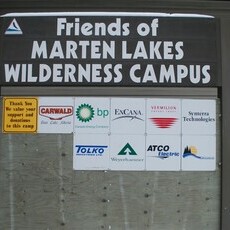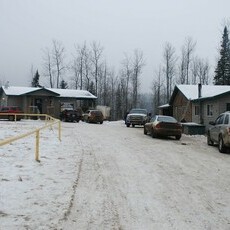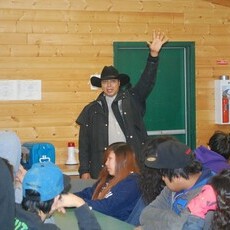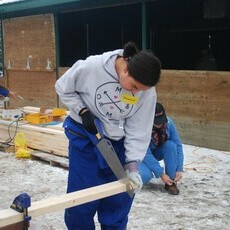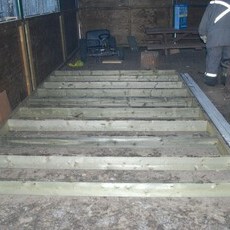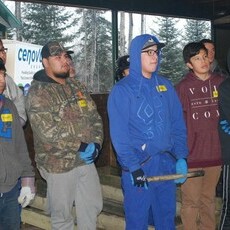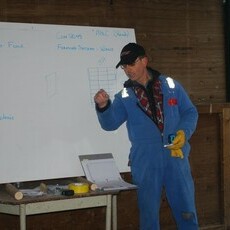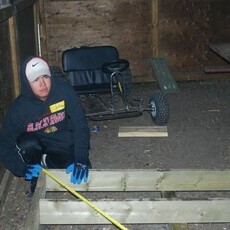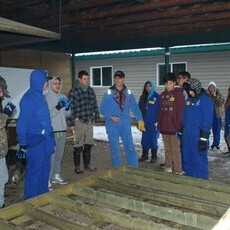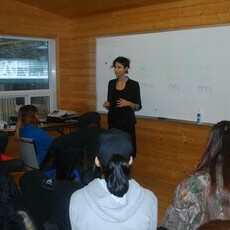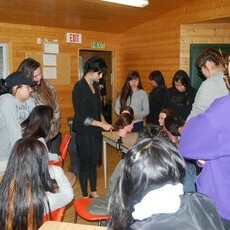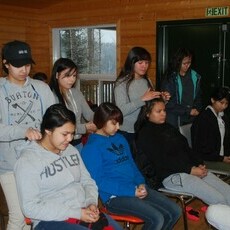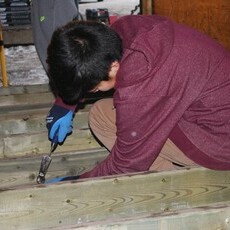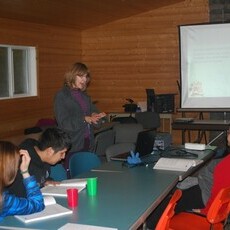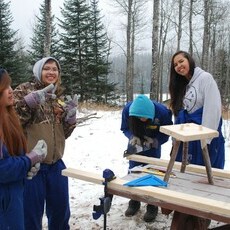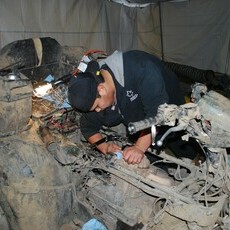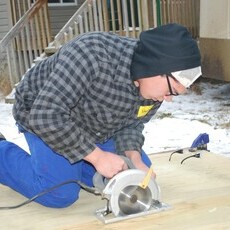KTC and NSD61 students step outside classroom walls to earn high school credits
Posted on December 7
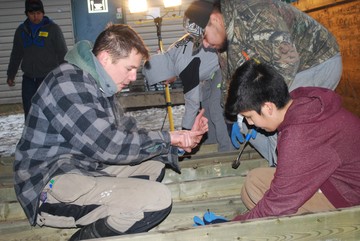
Little Buffalo School Teacher Andrew Tweedle working with grade 11 student Keanu Laboucan
A Peerless Lake School student echoed a statement many students can relate to; “I learn better by doing.” 44 high school students from Kee Tas Kee Now Tribal Council (KTC) and Northland School Division No.61 (NSD61) schools did just that by participating in a Career and Technology Studies (CTS) Camp at the Marten Lakes Wilderness Camp – Northern Lakes College Campus. The camp, located in an area where nature’s beauty shines, is located off Highway 754 between Slave Lake and Wabasca-Desmarais. From November 28th – December 5th, students slept in cabins just above the Marten Lakes and participated in high school credit courses related to carpentry, cosmetology, foods, mechanics and a firearms certification course. Students hand-picked these courses by completing a survey prior to attending camp.
Shavannah Anderson, a grade 12 student from Peerless Lake School, was one of many students to take a two credit construction course with CTS School/Industry Partnership Administrator Randy Chernipeski. For this course, students developed confidence for how to use hand-tools, how to properly measure and how to work as a team to build a floor and walls for a shed. Before course completion, Anderson explained even before arriving to camp, she was solely focused on carpentry because since she started taking carpentry at school, she has gotten really into it.
“The fact that I can build stuff,” said Anderson. “It makes me feel like I can relate to my grandparents, uncles and my Dad who are carpenters.”
Kelly Parsons is a high school teacher at Little Buffalo School. She observed the cosmetology course where students studied different hairstyles from different eras and countries and eventually transitioned to learning to how to make braids.
“A lot of the girls chose to take cosmetology and learned how to make different braids,” said Parsons. “Everyone tried to make the braids and manage to make an end product.”
While supervising at the camp, Parsons explained students seem to be in their element learning outside the classroom walls. A method that helps her see learning in action.
“I believe students are more engaged,” said Parsons. “There’s more hands-on so you can watch them learn step-by-step instead of ok I need to get your thoughts on paper. You see them building, you can see them measuring it off and see every step come together. I definitely see the learning occur. On top of learning, students were being cooperative with one another and developing new relationships because of this camp experience.”
Countless examples of students feeling comfortable in a learning environment were on display during the camp. Technology Specialist Paul Neethling says he saw constant interaction between students and an eagerness to learn. He added some students took it upon themselves to continue course work into the evening to make sure they earned credits towards graduation. Jason Bigcharles, Outdoor Education Specialist for KTC, has been involved in developing these camps for schools involved in the KTC-NSD61 partnership. He says it’s nice to see land-based learning is becoming intertwined with school-based learning and curriculum.
“Over the past 3 years KTC and NSD61 have been working hard to refine and improve land based learning opportunities, embedded in the Woodland Cree traditional and contemporary practice, for students in the partnership region,” said Bigcharles. “We are pleased to see the land based learning cultural activities become intertwined with school based learning and curriculum. Students have begun earning high school credits and receiving academic instruction at the camps and the results are amazing. Even after eight days of learning at the camp we have kids saying they don't want to go home and requesting to have more camps. At this particular camp two students relayed that the only reason they attended school regularly and kept their behaviour in check was in order to be able to come to camp. On the last day, a student asked when the next camp was as they were considering dropping out of school. When I told them we had another camp for them in April, they said they were going to stay in school to qualify to come to the next camp. The effects of the collaborative efforts are very clear to those involved in the camp and we are committed to continue to work collaboratively in order to offer more such activities to students and enrich their learning experience.”
During this camp, all students earned a Canadian Firearms certificate and at least 2 credits depending on the course they chose. When asked about the camp experience Shavannah Anderson says it’s nice to be outside and doing something that gives you experience and makes you feel more independent.



